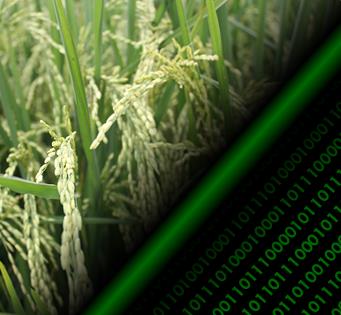A model for simulating the height of rice plants.
 |
2011 - European Journal of Agronomy, 34, 20-25 |
 |
Confalonieri, R., Bregaglio, S., Rosenmund, A.S., Acutis, M., Savin, I. |
Abstract:
A reliable approach for modelling rice plant height would allow the simulation of processes with a significant impact on yields, e.g., lodging, floodwater effect on leaves temperature, crop–weeds competition for radiation interception. In this paper we present a new model for the simulation of rice plant height based on the integral of the percentage of biomass partitioned to stems. The model was compared with four alternative approaches using data collected during eight experiments carried out in Russia, Japan and US between 1991 and 2000, proving to be the most accurate in reproducing plant height during the whole crop cycle. RRMSE ranged between 8.02% and 20.87%, modelling efficiency was always close to one and the absolute value of coefficient of residual mass never exceeded 0.16. It resulted also the most robust and the less complex (according to the Akaike’s Information Criterion) among those compared. The model presents a lower level of empiricism with respect to the other approaches found in the literature, deriving plant height from the allocation of biomass to stems, which are the plant organs most involved in determining canopy height. This model represents a suitable base for further developments aiming at including the effect of management practices (e.g., fluctuating water depth) and environmental factors (e.g., crop–weeds competition for radiation interception). Moreover, the low input requirements favour its inclusion in operational cropping systems models.
 |
Keywords: Oryza sativa L., biomass partitioning, allocation pattern, model robustness, Akaike’s information criterion, WARM |
 |
DOI: 10.1016/j.eja.2010.09.003 |
- Comparison of three calibration methods for modeling rice phenology
- A simple pipeline for the assessment of legacy soil datasets: An example and test with soil organic carbon from a highly variable area.
- A high-resolution, integrated system for rice yield forecasting at district level.
- Downscaling rice yield simulation at sub-field scale using remotely sensed LAI data.
- Analysis and modelling of processes involved with salt tolerance and rice.
- Estimating crop nutritional status using smart apps to support nitrogen fertilization. A case study on paddy rice.
- Development of generic crop models for simulation of multi-species plant communities in mown grasslands.
- Quantifying uncertainty due to stochastic weather generators in climate change impact studies
- Predicting rice blast disease: machine learning versus process-based models
- Boundaries and perspectives from a multi-model study on rice grain quality in Northern Italy.




